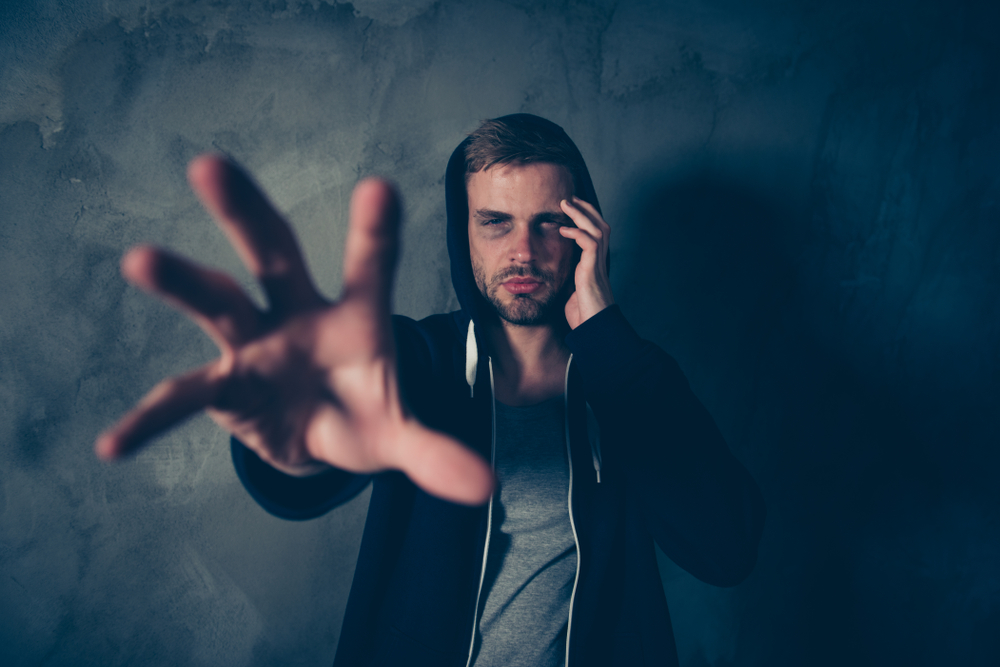
Last Updated:
May 28th, 2025
When we picture someone struggling with cocaine use, the image that often comes to mind is the stereotypical wide-eyed, paranoid and dishevelled. But the signs aren’t always so dramatic. In reality, the effects of cocaine can slowly show up in more subtle ways, particularly in how someone looks and behaves. One of the most overlooked giveaways? The eyes.
How cocaine usage affects the eyes
Our eyes are very delicate, highly sensitive organs that rely on us treating our body well in order to function as well as they can do. Healthy blood flow, balanced hydration and well-functioning nerves contribute to this, so when the body is thrown out of balance by frequent cocaine use, the eyes can begin to reflect that strain.
Let’s take a closer look at how.
Dilated pupils may not seem like a big deal on their own, but when they occur regularly, it can be a sign that the person’s body is constantly being pushed into overdrive.
While red eyes might seem harmless or easily explained away, when they’re frequent, they can be another clue that something deeper is going on, especially when paired with other physical and behavioural signs.
Long-term dryness can also lead to irritation and sensitivity, making everyday environments feel more uncomfortable than they should. It’s a small thing that can easily add up when the drug keeps pushing your system past its limits.
When your body’s resources are constantly stretched thin, even your ability to focus your vision clearly can suffer. It’s a telltale sign that the body isn’t coping well with the strain being placed on it.
This kind of sensitivity often worsens with sleep deprivation and dry eyes, both of which are common with cocaine use. Over time, it chips away at comfort and normal function.
It may not happen every time but when it does, it can feel strange and unsettling. If this becomes frequent, it’s another sign the brain and body are reacting to an overload they weren’t built to handle over the long term.
For someone using regularly, this might not seem like an immediate concern until a blurry spot appears or vision becomes noticeably affected.
At that point, the damage may already be done, highlighting the serious toll cocaine can take beyond the high.
Do these signs mean someone has a cocaine addiction?
Do these signs mean someone has a cocaine addiction?
Not necessarily. While cocaine eyes can be one of the more noticeable signs, they don’t automatically mean someone has a cocaine addiction. There are plenty of other reasons someone might be experiencing eye-related issues, especially if it’s just one or two symptoms showing up without anything else. For example:
- Allergies: Seasonal allergies or reactions to dust, pets or pollen can cause redness and irritation.
- Poor sleep habits: Late nights or inconsistent rest can leave the eyes looking strained or tired.
- Excessive screen time: Constant exposure to screens can dry out the eyes and affect focus.
- Use of other substances: Cannabis and other drugs can also cause pupil changes or bloodshot eyes.
Still, if you’ve found yourself wondering about a loved one’s drug use, it can be hard to shake that thought until you feel more certain. Eye issues alone might not point to cocaine addiction but when paired with other behavioural or physical changes, they could be part of a larger pattern.
Here are a few questions to help you explore whether other cocaine addiction symptoms might be present:
- Have they become more secretive or defensive when asked simple questions?
- Do they often disappear for hours with no clear explanation of where they’ve been?
- Have their sleeping patterns become unpredictable or non-existent?
- Are they experiencing intense mood swings or bursts of irritability?
- Have they lost noticeable weight or developed changes in appetite?
- Have you noticed financial struggles or money going missing without reason?
If you’ve answered ‘yes’ to more than one of these, it might be time to gently open up a conversation with them.
My loved one has a cocaine addiction – what can I do?
If you’ve had an honest conversation and it’s clear that cocaine use is part of your loved one’s life, you’re probably feeling a mix of concern, confusion and helplessness. That’s completely normal. Supporting someone through drug addiction isn’t easy, but you don’t have to do it alone.
At UKAT, we offer expert guidance and compassionate cocaine addiction treatment tailored to your loved one’s needs. Reach out to us today; we’re here to help you both take that next step forward.
(Click here to see works cited)
- Person. “Cocaine Eyes: What They Are and Why They Happen.” Healthline, Healthline Media, 25 Aug. 2021, www.healthline.com/health/substance-use/cocaine-eyes.
- Farooque U, Okorie N, Kataria S, Shah SF, Bollampally VC. Cocaine-Induced Headache: A Review of Pathogenesis, Presentation, Diagnosis and Management. Cureus. 2020 Aug 30;12(8):e10128. doi: 10.7759/cureus.10128. PMID: 33005542; PMCID: PMC7524019.
- “Nystagmus: Symptoms, Causes and Treatments.” WebMD, WebMD, www.webmd.com/eye-health/nystagmus. Accessed 9 Apr. 2025.



